No.5
WE ARE MISSOURI
MISSOURI CREATIVE IS A BRANDING AND CREATIVE COMMUNICATIONS CONSULTANCY.
WE CREATE MULTI-DIMENSIONAL BRAND WORLDS; BRANDS THAT YOU CAN TOUCH, TASTE, HEAR AND FEEL. BRANDS THAT HAVE THE POWER TO MOTIVATE AND MOVE YOU. BECAUSE WE ARE UNBOUND BY DISCIPLINE AND WORK ACROSS CHANNELS, WE DELIVER MORE CONNECTED AND DEMONSTRABLE EXPERIENCES FOR CONSUMERS AND TANGIBLE BUSINESS RESULTS FOR OUR CLIENTS.

DOWNTIME ON DEMAND
A PICTURE OF DOWNTIME TODAY AND THE IMPLICATIONS FOR BRANDS
WWW.MISSOURI-CREATIVE.COM Missouri Creative 7.02 The Tea Building 56 Shoreditch High Street London, E1 6JJ United Kingdom P: +44 (0)207 749 2605
WELCOME TO THE FIFTH EDITION OF SHOW ME, OUR BI-ANNUAL PUBLICATION.
This issue focuses on how consumers are choosing to spend their downtime, drawing insight from the bespoke research we commissioned with over 2,000 participants.
We take a look at two paradoxical ways of spending your downtime in two sectors that have seen considerable growth in the last couple of years; interviews from the COO of esports team FNATIC, Glen Calvert, and COO of luxury fitness studio Core Collective, Heloise Nangle.
Additionally, we’ll share some of our recent work with brands that aim to enhance consumers downtime.
And finally, we’ve included a first-hand experience of the Spanish capital of active downtime, Valencia.
We hope you enjoy the read and do get in touch if you want to discuss the following content or any brand challenges you may have.
Stuart and Paul

Stuart Wood
Paul Brennan
CONTENTS
HELLO,
stuart.wood@missouri-creative.com founding partner founding partner paul.brennan@missouri-creative.com
FEATURE INTERVIEWS RECENT WORK SHOW ME PICSOLVE MARRIOTT UK SPORT HELOISE NANGLE COO OF CORE COLLECTIVE GLEN CALVERT COO OF FNATIC VALENCIA DOWNTIME ON DEMAND
DOWNTIME ON DEMAND IF
TIME IS MONEY YOU ARE NOT AS BROKE AS YOU THINK

Back in 1930, one of the most influential Economists in history – John Maynard Keynes – predicted that in the future working hours would be short and vacations long; something that came to be known as the 15 hour-week.
Technological progress was so fast that Social Psychologists wondered what people would do with so much free time, and what implications this would have for local communities.
Fast-forward to 2020, and we can agree that this did not turn out to be a cause for concern. Everybody everywhere seems busy all the time.
To begin with, it is a perception issue. On average, people in developed countries have more leisure time than they used to. However, the same technological progress that enabled prosperity and more free time has also ushered in an age of abundance that is behind a sense of perpetual FOMO that seems to affect us all.
It’s as if we are constantly playing catch up on shows, books, and places to visit –always aware of the limitations of our time. Add to this the fact that we are also more connected than ever, and what you get is a generalised sense of burnout.
In order to understand how people are spending their downtime, we conducted a study with YouGov, and interviewed over 2,000 people from across Great Britain.
Here we will present key insights from this national survey, as well as learnings from secondary research that helped us to create a better picture of what downtime looks like today.
Americans work nearly 12 hours less today than they did 40 years ago. In the UK, the average full-time working week has shortened by 18 minutes in the last 10 years.
(Source: The Economist)
A COCOONED GENERATION 1
The home is undisputedly the most popular place to switch off and relax according to any age group. Surprisingly, our research shows that the group that is most likely to choose ‘Staying at home’ when wanting to switch off are 18-34 years old (62%) – even more so than 35-44 (58%) and 45+(51%).
Desire for more intimate experiences is widespread. A recent Mintel study shows that 28% of people aged 24-31 now prefer drinking at home – their most cited reason (according to 74%) is intimacy and relaxation.
In fact, our research shows that 23% of Brits aged 18-34 years claim to have opted to stay in on a weekend night to entertain friends or family on at least 3 occasions last October.
62%
of Brits aged 18-34 claim to prefer to switch off and relax by ‘Staying at home’.
(Source: Missouri Creative)

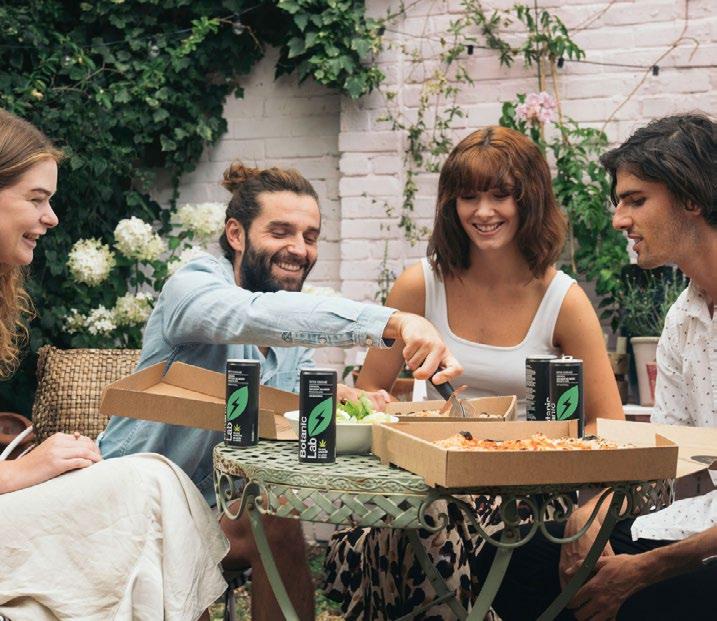
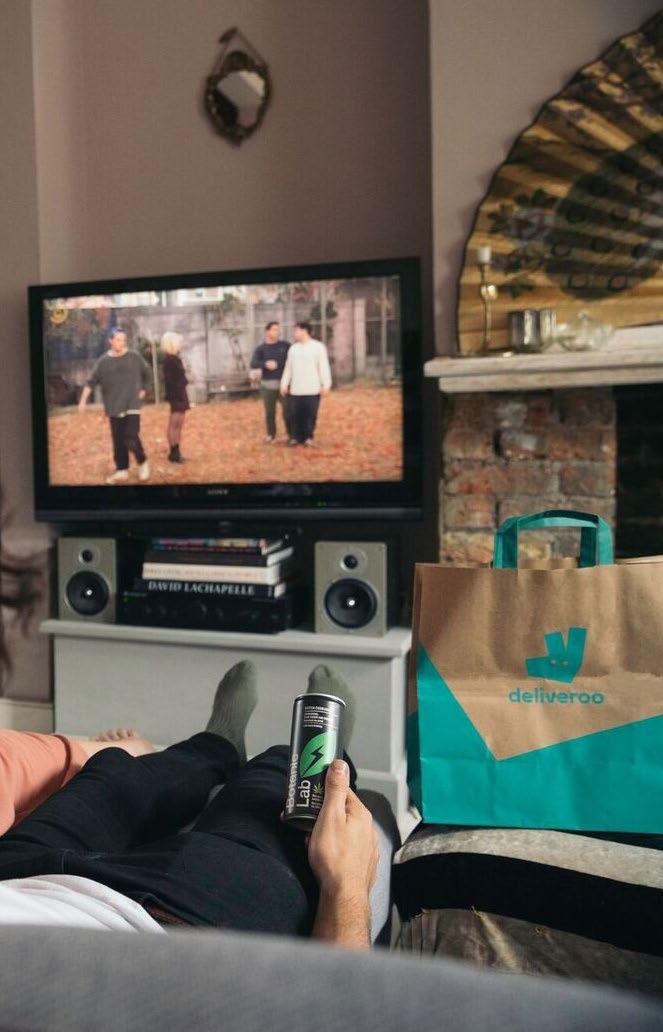
Botanic Lab x Deliveroo Botanic Lab and Deliveroo team up to deliver the company’s CBD drink, “Dutch Courage”, right to your home
DISCONNECT TO RECONNECT
JOMO IS THE NEW FOMO 2 3



The second most popular way to switch off for 18-34s in the UK is to ‘Spend time in nature’ (22%) – over one and a half times more than those who answered, ‘Going out to socialise’ (14%).
A 2018 study commissioned by UK GOV showed that the proportion of adults in the UK visiting nature at least once a week increased from 54% in 2010 to 62% in 2018 – a trend observed across the age spectrum.
Both Pinterest and Airbnb have reported a similar trend. In 2019, Pinterest searches for ‘nature travel’ was up 88%, whilst Airbnb saw a 539% year-on-year rise on nature-related bookings.
The main factor behind this trend is a growing awareness of both physical and mental health – reported by over 50% of people interviewed by UK GOV.
18-34s want to ‘Spend time in nature’ more than ‘Going out to socialise’ in order to switch off.
(Source: Missouri Creative).
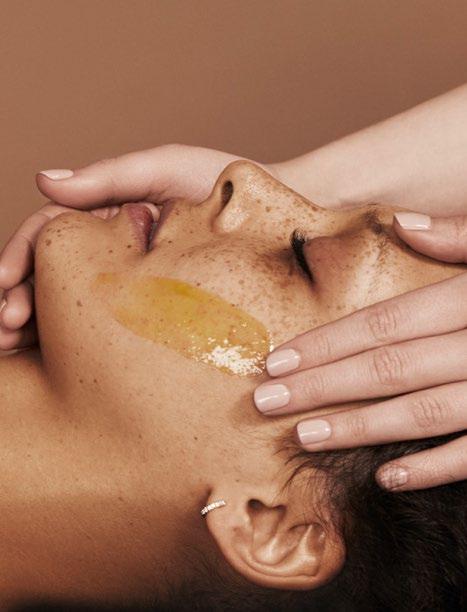
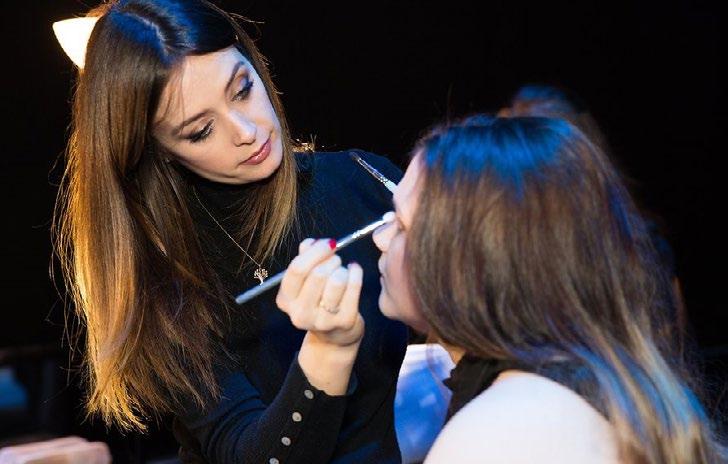
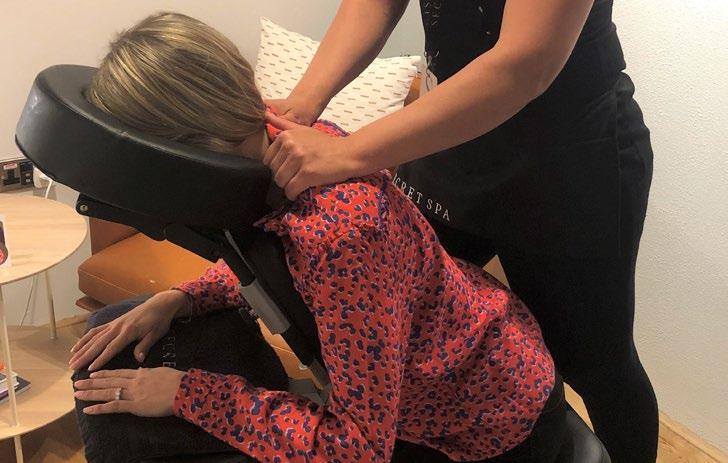
Book London’s best beauty therapists to your home, hotel or workplace for all your beauty and wellness needs.
Our research sheds light on a different side to the UK’s Millennials and Gen Z’s, and highlights that the old cliché of being young and always out with friends is in the past. Instead, our most connected generation is also the keenest to disconnect.
Amongst the 62% of them who prefer staying at home to relax, the majority also claim that they would rather switch off at home alone (34%) than with friends or family (29%).
In fact, 44% of 18-34s in Britain spend most of their downtime alone – a rate much higher than the national average (35%).
52% of 18-34s in Britain stayed in on a weekend night in October and played video games, whilst 91% of them also claimed to have stayed in and watched TV or streamed videos.
So forget what you heard about FOMO (fear of missing out), because we’re in the age of The Joy of Missing Out (aka JOMO).
According to The Independent, 78% of Millennials in the UK now actively engage in JOMO at the expense of socialising with friends, whilst 1 in 5 of them say subscription services are leading them to enjoy greater levels of JOMO.
The Independent also highlights that the average UK Millennial now spends around £475 a year on subscriptions to streaming services such as Netflix and Spotify.
As a consequence, the younger are increasingly becoming the loneliest too. A recent UK study revealed that people aged 16-24 have the highest levels of loneliness in the country. (Source: BBC)
44%
of 18-34s in Britain spend the majority of their downtime alone – this makes them the most isolated demographic age group in Britain.
(Source: Missouri Creative).
North Face x Outward Bound Trust
The North Face has partnered with The Outward Bound Trust to enable thousands of young people to experience exploration in the UK.
Secretspa
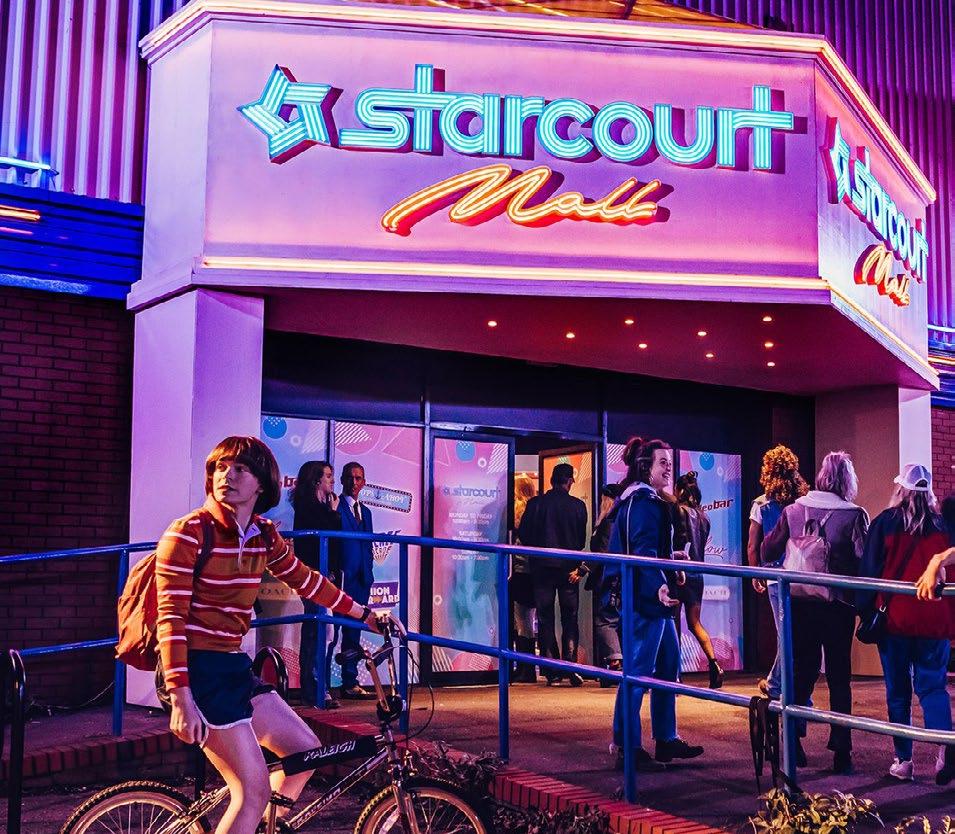
Even though a large number of 18-34s are choosing to stay by themselves – the majority of them socialise at the weekend with 59% spending at least one evening at a friend’s house, whilst 63% entertaining friends or family at theirs in October.
In fact, 69% of Millennials still say that time spent out with friends and family is more valuable than nights alone at home (Source: Eventbrite).
Our research shows that 33% of 18-34s had been to at least 1 live experience last October. The Eventbrite study confirms this highlighting that 77% of Millennials think the best memories of their lives are made at such events, and that for 79% of them attending to these unique experiences with friends help to strengthen their relationships.
So, it’s not that the UK’s Millennials and Gen Z’s have forgotten how to socialise, rather it’s about quality of time than quantity of time. As at-home entertainment continues to evolve, out-of-home options will need to get creative to provide the novelty required to entice their imagination and win their custom.

I’M A MILLENNIAL, GET ME OUT OF HERE 4 IMPLICATIONS FOR BRANDS

33%
of 18-34s attended at least 1 live experience last October.
(Source: Missouri Creative).
• Exploit new channels with products and services to win consumers where they increasingly choose to spend their downtime – at home.
• Explore mindfulness as a way to facilitate consumers to reconnect with themselves – your audience craves ‘being in the moment’ and are willing to reward brands that facilitate them achieve this balance.
• Create a sense of community to allow increasingly isolated consumers to feel part of something bigger and more meaningful.
• Be creative, give consumers new reasons to leave the house; you’re competing with the home too now – a place that gets more interesting every day.
Secret Cinema The ultimate immersive experience – buy a ticket to Secret Cinema and you can spend an evening living inside a film.
All figures, unless otherwise stated, are from YouGov Plc. Total sample size was 2061 adults, of which 413 were aged 18 to 34. Fieldwork was undertaken between 29th - 30th October 2019. The survey was carried out online. The figures have been weighted and are representative of all GB adults (aged 18+).
NON-ACTIVE DOWNTIME
ACTIVE DOWNTIME TOP 30 TOP 30























































Netflix 2. BBC 3. Sky 4. Apple 5. Samsung 6. Sony 7. Amazon 8. Audible 9. PlayStation 10. Kindle 21. Virgin Media 22. Wetherspoons 23. Panasonic 24. Now TV 25. Waterstones 26. Vue Cinemas 27. Odeon Cinemas 28. HP 29. Instagram 30. Steam
1.
11. ITV 12. Amazon Prime Video 13. Facebook 14. Google 15. Xbox 16. YouTube 17. Microsoft 18. LG 19. Nintendo 20. Channel 4 1. Nike 2. Adidas 3. Puma 4. Reebok 5. The North Face 6. Fitbit 7. New Balance 8. Under Armour 9. Pure Gym 10. Asics
Trespass 23.
24.
25.
Apple
11. Berghaus 12. Karrimor 13. David Lloyd 14. Garmin 15. Decathlon 16. Nuffield 17. Virgin Active 18. Speedo 19. Mountain Warehouse 20. Regatta
21. Sports Direct 22.
National Trust
Everyone Active
Sketchers 26. Salomon 27. Craghoppers 28. Slazenger 29. Dunlop 30.
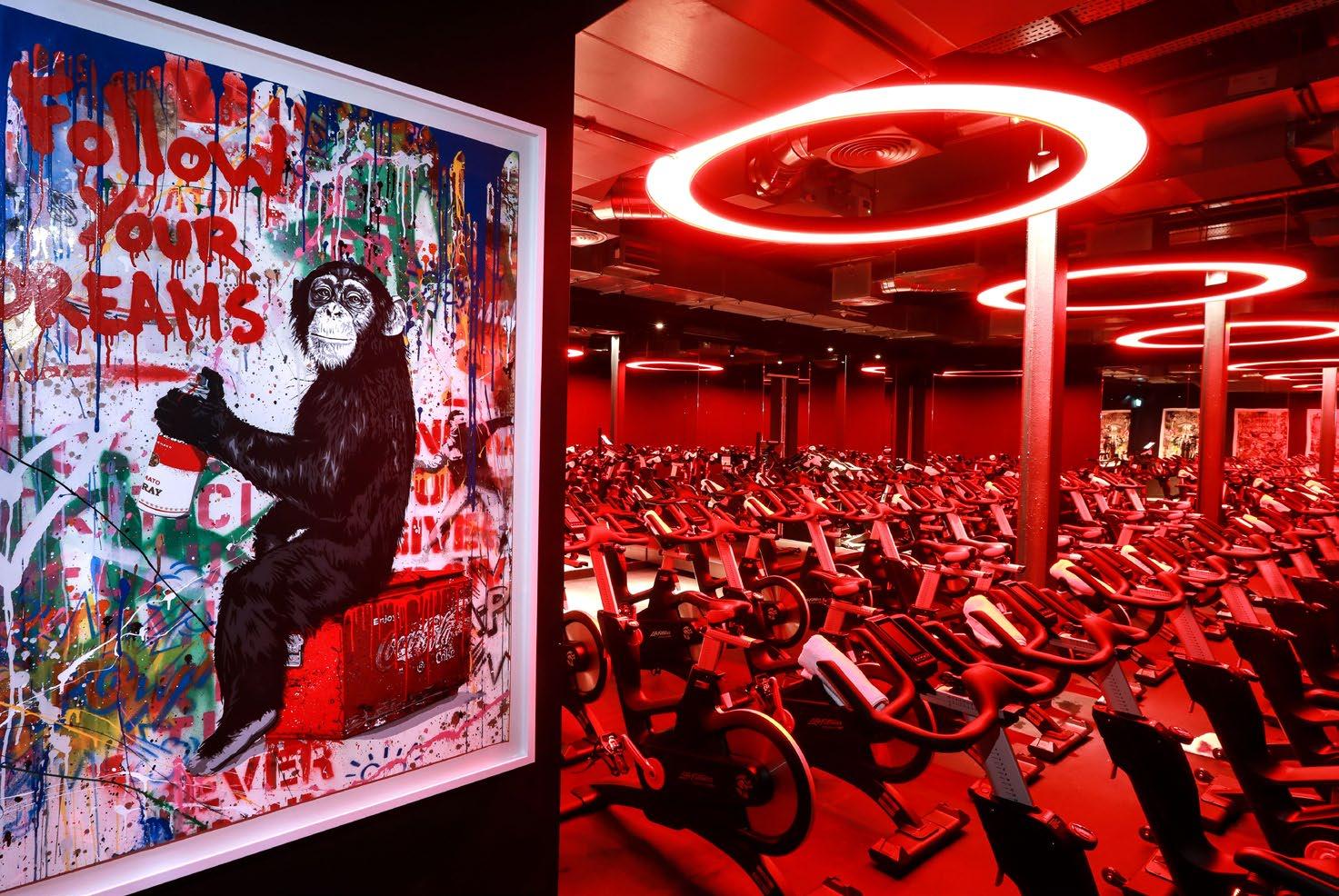
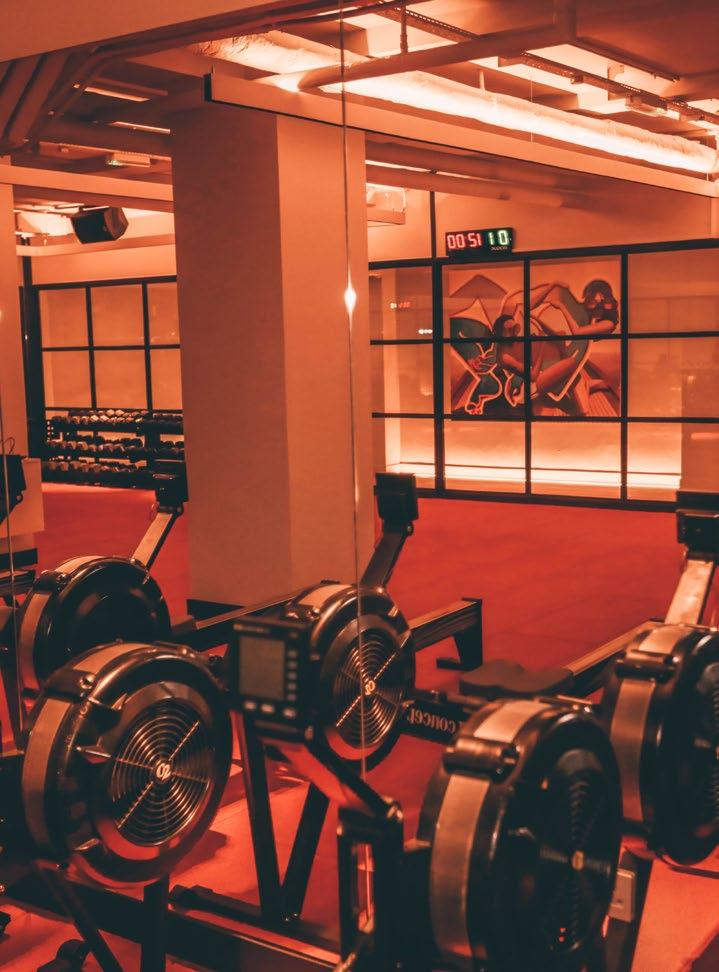

“The world is moving away from the stereotype that every social occasion has to be in the pub. Now, it can be about moving your body and this shift in mentality has changed how people hang out.”
Lululemon Brand Ambassador and COO of Core Collective – one of London’s most successful boutique gyms – shares her thoughts on the effect the boutique fitness industry is having on our everyday lives.
Heloise Nangle ART & FITNESS COLLIDE

1. The fitness industry is booming and there are more people than ever willing to spend their downtime at the gym. What do you think has changed in people’s mentalities?
I think part of the reason is that people have a better understanding of their bodies now.
The fitness industry, and fitness professionals have a duty to educate people on how much it’s going to benefit them in their everyday lives. And there has been a lot of focus recently on communicating how fitness helps people with feeling stronger physically and mentally.
After you get people training, they feel more energised and they go into their day feeling great about themselves. They see the physical changes, as well as how they’re suddenly capable to tackle things they weren’t normally able to, and that makes them want to come back.
But as well as the physical and mental benefits, there’s also the social side of fitness, which has now become one of the main reasons to get involved.
For example, at Core Collective we provide a space where you can socialise, and a lot of our clients feel like they’re part of a community here. You see a lot of them sitting around having breakfast after a class, and it becomes a feeling of "we're in this together".
The world is moving away from the stereotype that every social occasion has to be in the pub. Now, it can be about moving your body and this shift in mentality has changed how people hang out.
2. Consumers are now willing to pay a premium for their classes and gyms. You can pay up to £30 per workout now. What do you think people expect from their gym today that makes them willing to pay so much?
Clients understand the benefits they get from these kind of premium spaces. This shift in mindset we’re seeing means that more and more people are willing to pay for the entire experience. It’s not just the workout anymore.
So, they expect everything to look and feel of the highest quality. And the trainers have to go the extra mile to look after customers and deliver experiences that feel both premium and personal to everyone.
3. Core Collective is very unique as they offer multi-purpose spaces where people can do more than just workout. Why do you think this works so well?
It’s the whole experience you're getting. Our bread and butter are our fitness classes, which complement each other and allow people to get something different from each one.
Then we have the communal spaces where people feel they’re part of a community. These spaces offer our clients the opportunity to socialise at our in-studio café and appreciate contemporary art provided by our partners at the Maddox Gallery.
As people feel they have less and less downtime, it can be a challenge to fit in a workout, work, and then go out to relax. So, we offer a space where it’s possible to combine all of it. You sometimes see clients having a meeting at our studio, and then working out after – all in the same space.
4. Where do you think the fitness industry in the UK is going?
think it's about making sure that we’re able to understand our bodies better, rather than just following trends. That’s why we strive to stay top of technology – tech is hugely important in developing the fitness industry as it helps people to progress in their journeys. Tapping into statistics – recording workouts and tracking that data is crucial now. Technology can be a very useful tool for personal development.
5. There is a rise in the amount of home workouts and people investing in tech to be able to workout at home. What do you think about this?
Naturally, you want to make sure you're supporting your clients at home as well. However, I don’t think you can replace a gym with a home workout all the time.
A lot of people don’t know the fundamental basics of working out and need all the support and coaching of a fitness professional. But specially because the gym is evolving to become less about that singleminded idea of getting fit, and much more about the community and the downtime experience it can provide.
Living in London can be quite a lonely experience. You see people working long hours from home or spending a lot of time in an office. We know it’s better for them to get out and go somewhere else to exercise – both for their mental and physical wellbeing.
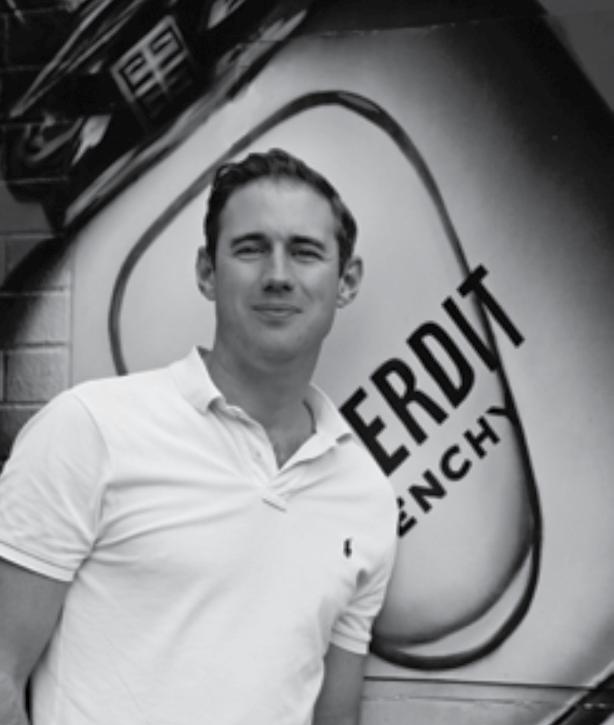
1. What motivated you to move into the esports industry?
I was interested in esports because it’s professional gaming, but the reality of what they’re doing is entertainment. It’s exactly like sport, you’re watching something that you’re into, and you’re watching people who are good and competing. The way esports is different to traditional sports, is because traditional sport is played in real life and gaming is played online. It’s a video native platform, so you have an entrainment medium that is instantaneously global and scalable. And that intrigued me. When you have content, you have media companies; I see an esports team and I see the next Disney, Red Bull or Vice Media.
2. The stereotype of gamers is that they’re potentially lazy or wasting time. How do you think the perception of people who game has changed over the last few years?
The stereotype is inaccurate and was potentially relevant two decades ago when it was very much a counterculture. had the same perception before joining FNATIC. You think of gamers being on their own in their bedroom not looking after themselves. Today, gaming is the core entertainment of not just the youth of today, but millennials as well.
YouTube Games, the game section on YouTube, has 50 billion watched hours a year and Netflix have 50 billion watched hours a year. When you think of the scale of the industry you can’t stereotype people into one demographic because everyone is playing Candy Crush, Fortnite, or professional CounterStrike. Everyone’s a gamer.
Because so many people game, there are so many people into Twitch. The people they are watching are charismatic and entertaining; they’re the cool kids and they use gaming as a platform. That’s why people are so into Ninja, he’s approachable and funny. If you go to an event, you have some people who do fit the stereotype, but there are also others who do not.
Glen Calvert
Glen Calvert, COO one of the biggest esports team in the world, FNATIC, speaks to us about the generational shift that is the primary driving factor for the exponential growth in the gaming and esports industry.
GAME ON
3. What is driving the increased investment in the industry? Do you think it’s because it’s now seen as an entertainment medium?
The reason you’re seeing the growth of the sector and the growth of brands looking at it is really down to Fortnite that became this global phenomenon and changed the face of gameplay.
It’s not just about the competitive side of gaming. It’s about the social networks of the future that are going to replace Facebook.
Fortnite is a perfect example as it’s a huge social network. Tonnes of people come together and they’re in there to compete and play, but they’re also there to chat. Then you have that streamed outwards on platforms such as YouTube and Twitch forming an entertainment media that throws it into the mainstream.
4. With the social side of gaming and bringing it into the mainstream, what do you think is going to get everyone who doesn’t game interested in streaming, or going to a live esports event?
There are a few things that apply. You can’t ignore the fact that there has been a generational shift of what the young are doing with their downtime. You’ve got a generation who have grown up digitally and socially native with gaming as a core passion point. They’re not going out in the cold playing tennis. It’s much more exciting to play Fortnite, Call of Duty, or League of Legends with your friends. They’ve been brought up on Video On Demand.
Because of this, Reed Hastings, Netflix CEO, says he’s not nervous about Amazon Prime or HBO, he said he’s nervous about Epic Games and Fortnite. You’ve got a generation who care more about that. They’re not going and watching a 30 minute TV show.
Also, people have more free time with remote working and things like that and you’re seeing people spending more time in games, highlighting the complexity of the social network of the future.
5. What do you think the future of esports in the UK looks like?
The UK is behind the rest of the world, in terms of awareness and viewership. Esports in Asia is quite far ahead and has always been ahead in terms of tech and games and its very normal to be in a bar and have it on the TV. Next they’ll be looking to incorporate AR and VR to create a deeply immersive experience.
The future in the UK is going to be growth and Fortnite is driving that forward. You’re seeing more brands enter the space and you’ve got more facilities being built (like this one) for people to come together. You’ve got more venues hosting events and more pubs showing esports. Brands are starting to think of it as a viable media spend option.
6. The gaming industry has a lot of parallels with the music industry. Can you talk a bit about your experience of this?
There is a huge amount of cross over between the gaming industry and the music industry. If you want to create hype around a new album dropping, and you want the youth of today to see it, record labels or artists use players to drop albums in their games.
The big fashion houses are traditionally the zeitgeists; if want Louis Vuitton to be in the mind of the cool kids then they design the clothing for the characters in the games. The Disney’s of the future are going to be the game publishers.
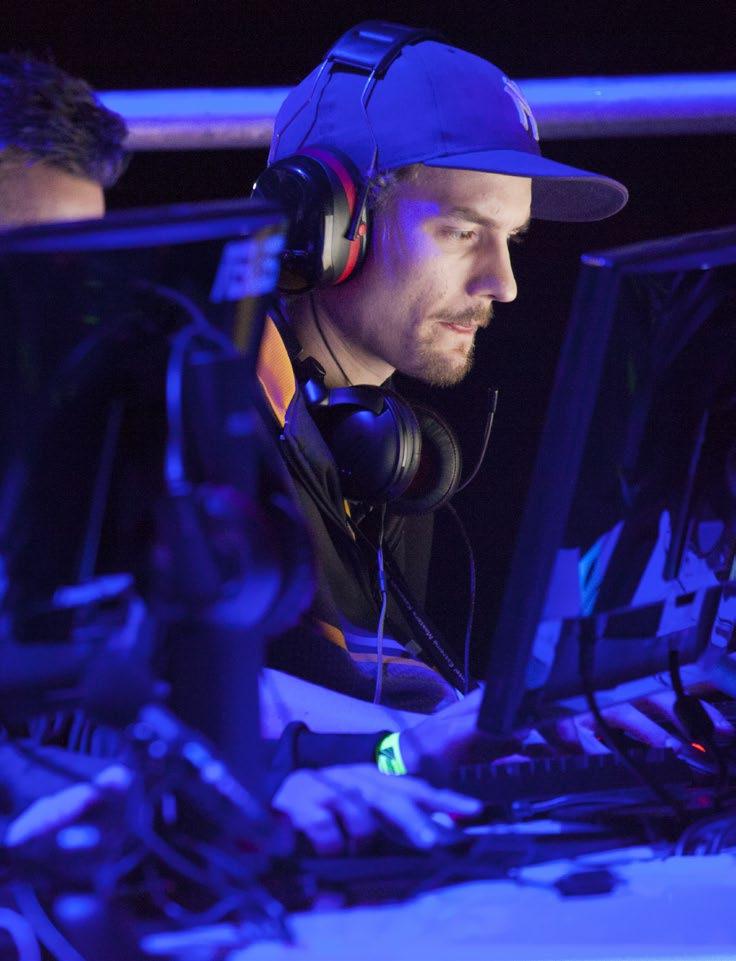
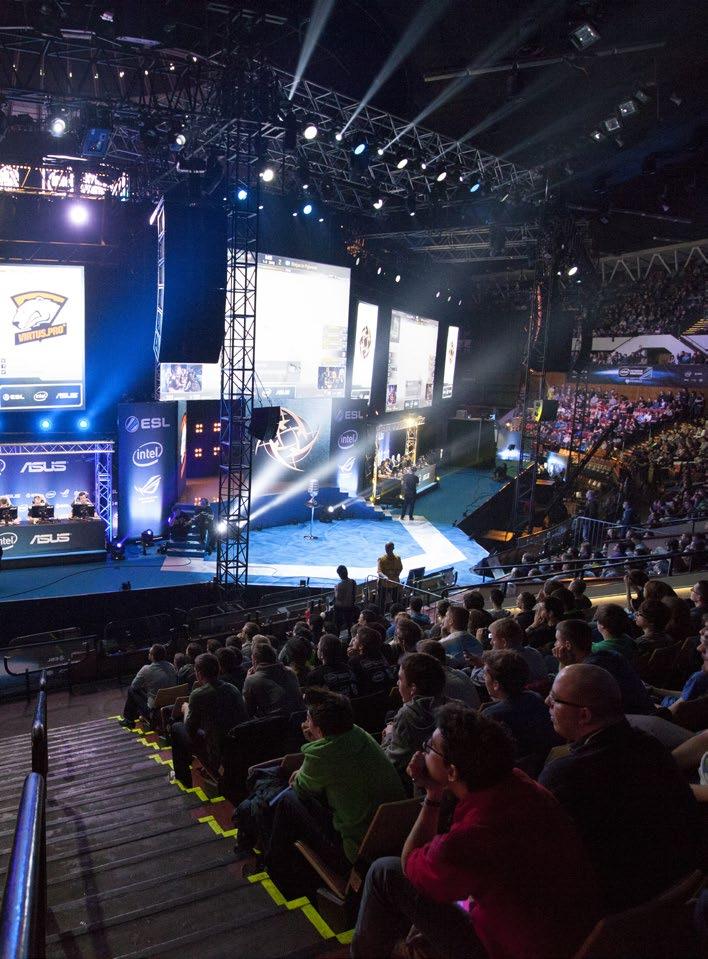

“You can’t ignore the fact that there has been a generational shift of what the young are doing with their downtime. You’ve got a generation who have grown up digitally and socially native with gaming as a core passion point.”
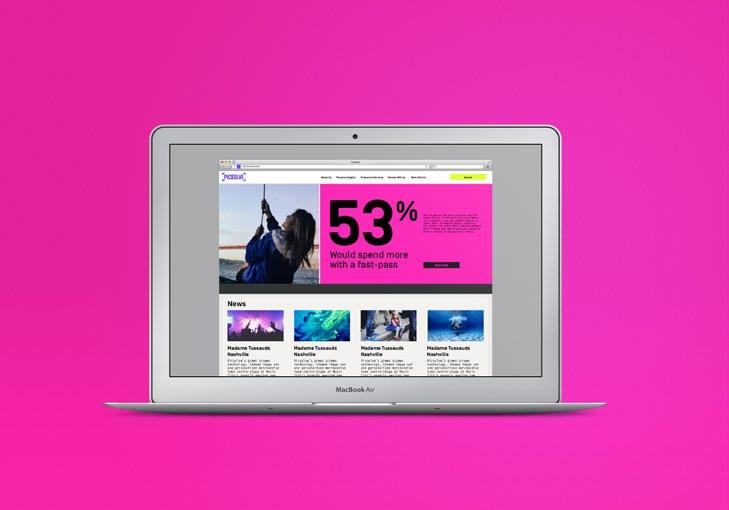
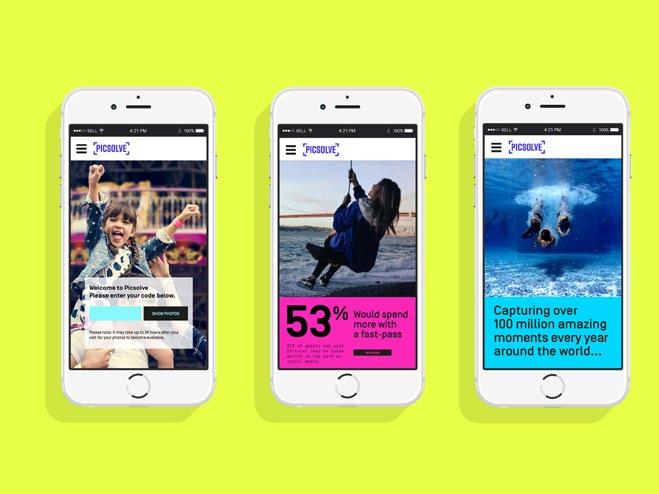
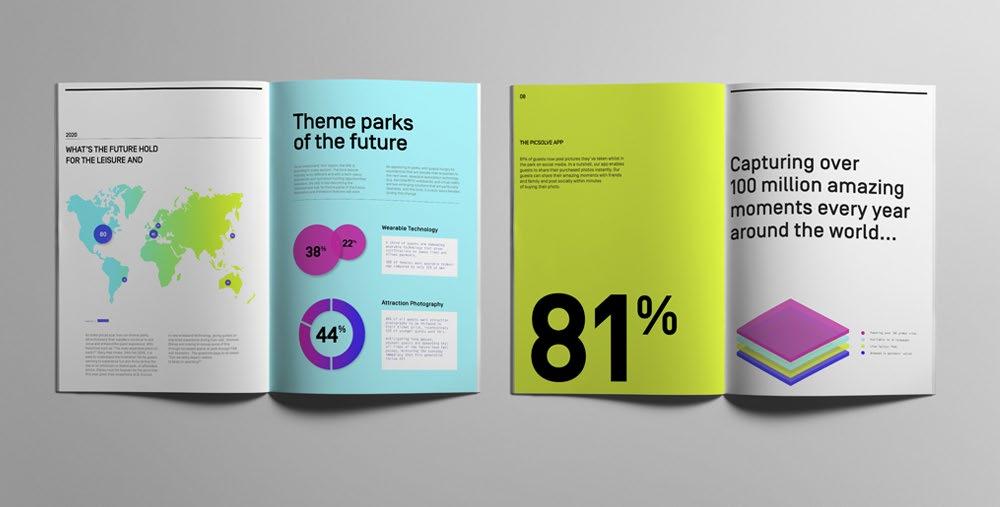


RECENT WORK

PICSOLVE
If you’ve ever been for a family day out at Thorpe Park and had your photo taken while screaming on the rollercoaster, that’s what Picsolve does, but they also do a whole lot more.
They partner with leading brand names in entertainment and leisure. Typically, you will find them at world-class destinations where people go to have a good time. Picsolve are there to capture ‘the moment’ for them to share with friends in realtime and enjoy the moment more, again and again.
Picsolve are primarily a B2B business, however what they provide is very much a B2C product offer but always set within the context of places where people go to have fun and enjoyment.
Picsolve’s identity did not capture this sense of excitement neither did it portray them at the forefront of new digital technologies with the ability to understand consumer’s patterns of behaviour and help to reward their loyalty with new exciting opportunities to enjoy their downtime.
The new identity places Picsolve at this intersection of technology, entertainment and e-commerce and portrays them as a leader in their field who can capitalise on the ever-growing experience economy.
This goes way beyond the traditional typical visitor attractions, now Picsolve can expand their remit to anywhere where people spend their active entertainment downtime.

Brand Positioning Brand Architecture Brand Identity Visual Language Scan me OUR INVOLVEMENT:

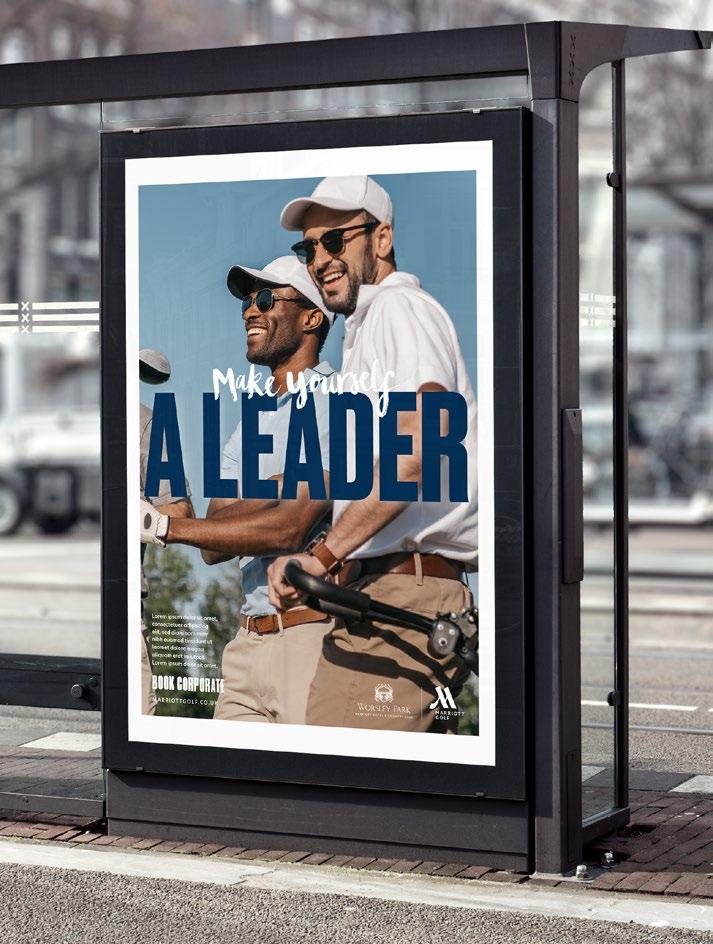
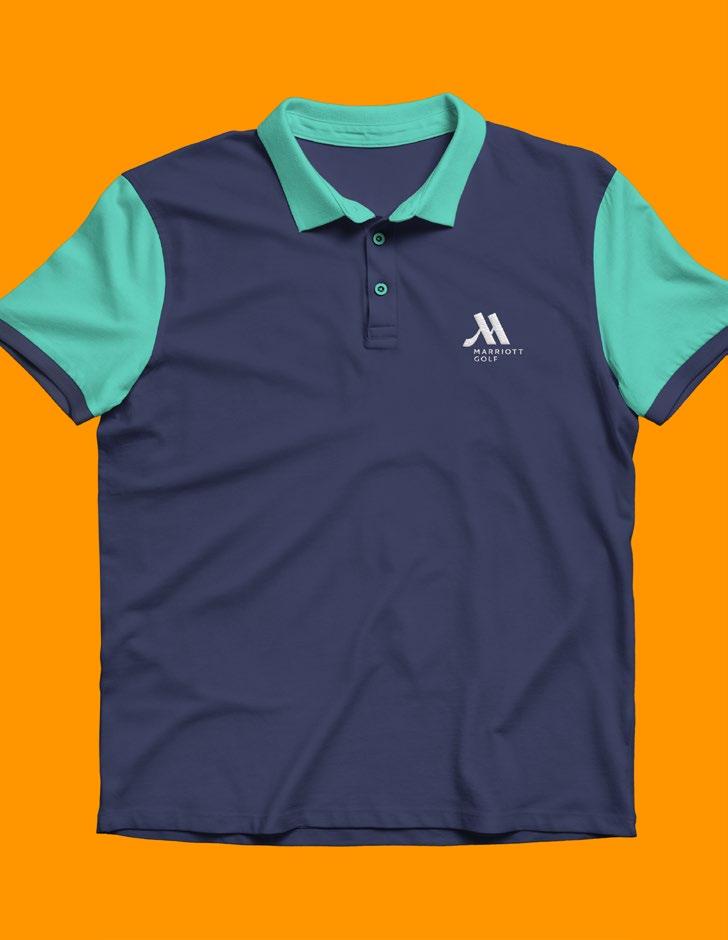
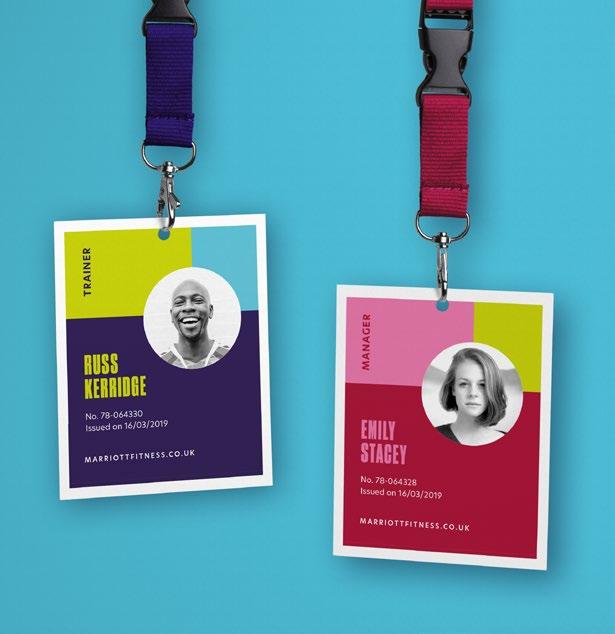
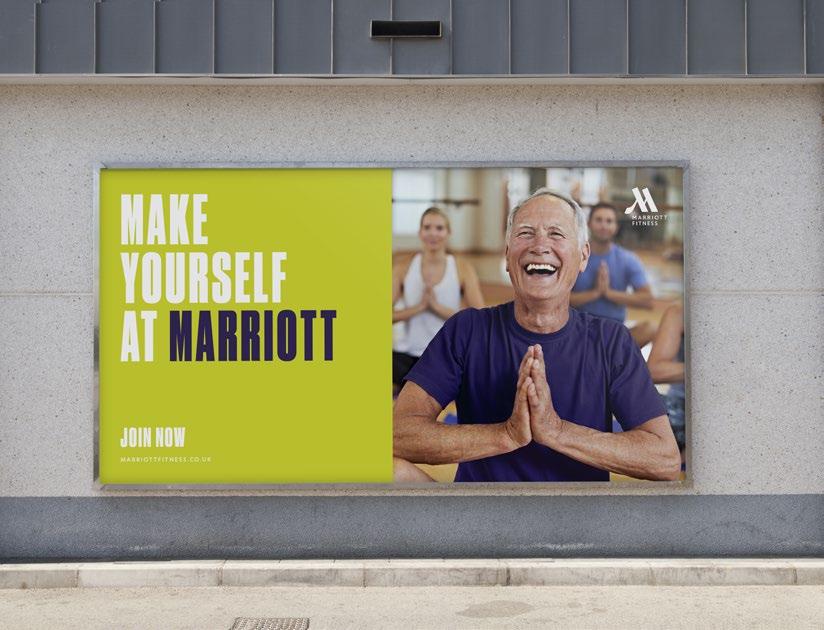

MARRIOTT
Everyone knows Marriott, most know it for its hotels but less know it as a lifestyle brand. However, Marriott has a really broad offer that can meet the needs of anyone who wants to maximise and enjoy their downtime whether you fancy a round of golf, a spa massage or sip an old fashioned at the bar or perhaps all of the above.
Our task was create an overarching campaign for the Marriott lifestyle brand that can be flexed across multiple product offers. Working for both inner city clubs and country clubs we created the campaign platform, art directed the photoshoot and developed a suite of assets based on the idea that you can –Make yourself at Marriott.
The concept takes inspiration from the fact that Marriott makes you feel at home, whoever you are, wherever you’re from and whatever you like to do. It’s a place where you can bring out and be the best version of you. Here you can relax, get fit, go for a swim, indulge in a hard-earned treat, meet new likeminded people and make new friends.
We set out to capture and promote the fact that Marriott have created a welcoming and open environment where you can just be yourself whatever you want from your own downtime.

Concept
Direction Photoshoot Digital Assets
me OUR INVOLVEMENT:
Campaign
Art
Scan
UK SPORT
UK Sport is a government body that, among other things, helps promote sporting events within the UK.
They tasked us to create a visual campaign identity that brought alive #feelpartofit. The idea behind the campaign was to engage the 38% of people who tune into large sporting events like the Olympics and Wimbledon but drop off the radar in between. Ultimately, the campaign is designed to inspire the 38% to attend live events during their downtime and feel part of the action.
Drawing from the emotions felt by spectators when attending live sports events, we created a campaign manifesto and a vivid identity. Dynamic patterns and vibrant colours form the basis of the identity whilst emotive imagery ties in the feelings of both athlete and spectator.
We’ve since worked with UK Sport to bring the campaign to life in two highenergy, action packed videos; one for the Taekwondo World Championships and one that can be used on an ongoing basis at multiple events to show the breadth of live sport that is on in the UK over the next few years.


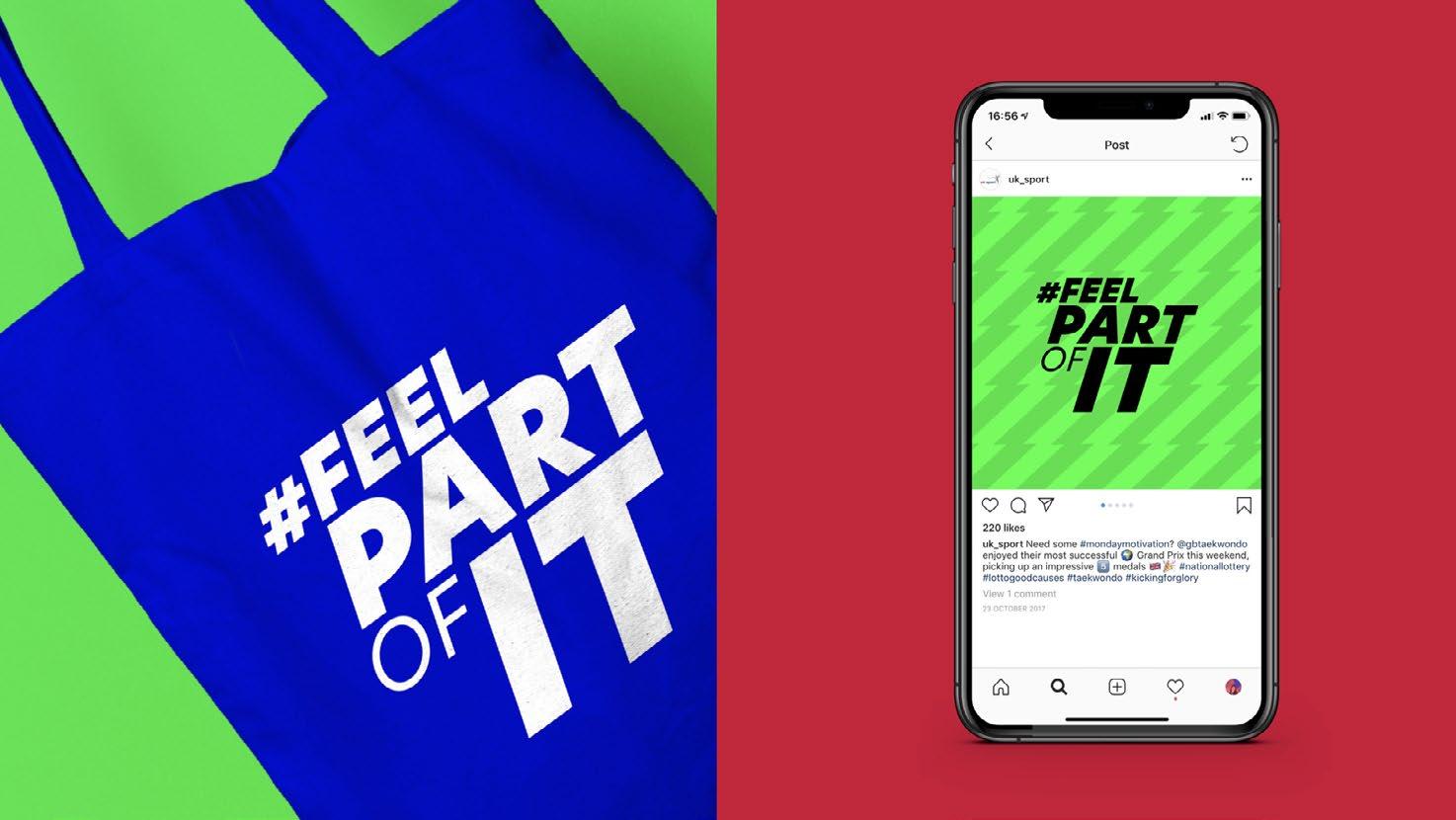
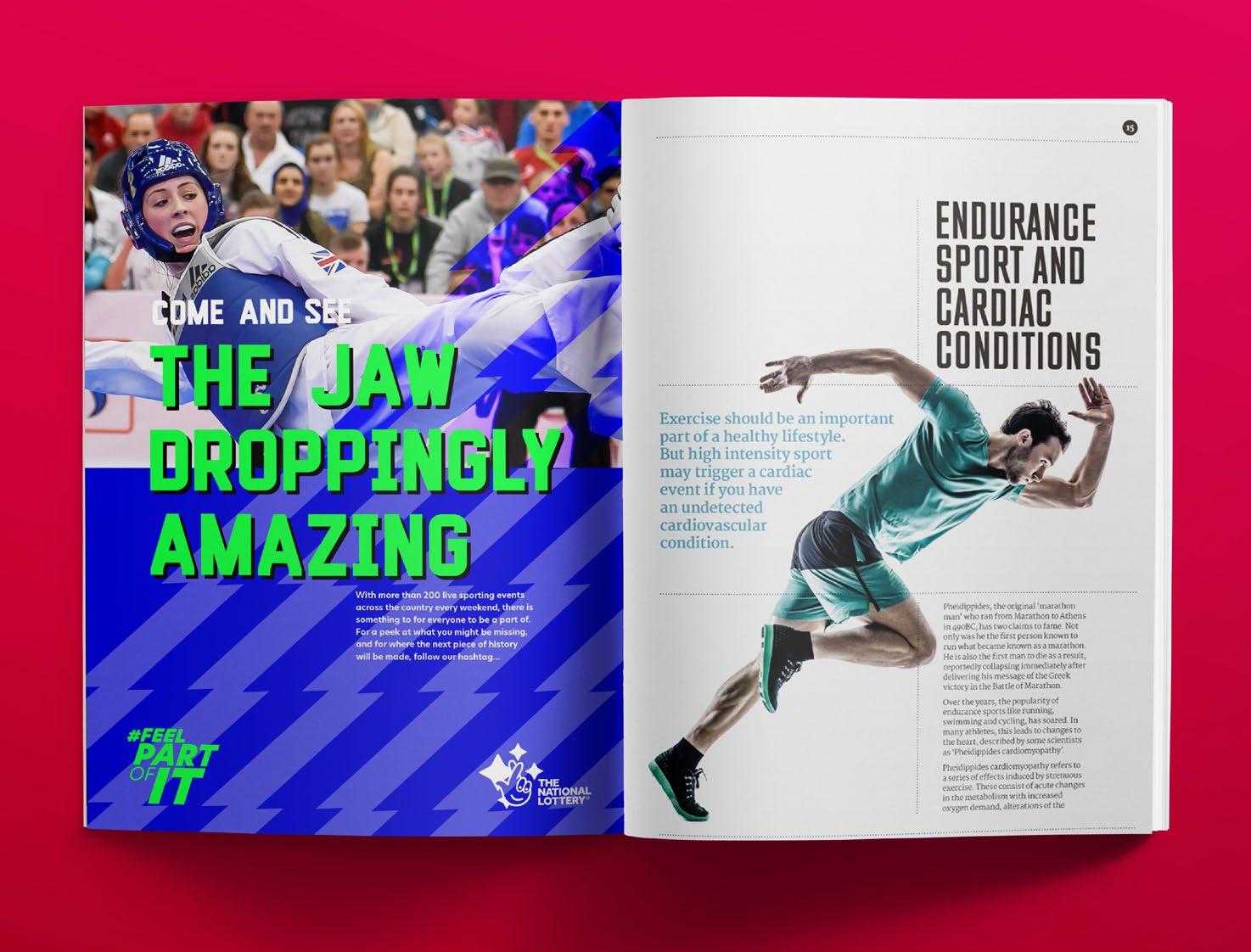

Campaign Concept Art Direction Digital Assets Social Assets Scan me OUR INVOLVEMENT:
SHOW ME VALENCIA

OUR PLANNER, MURILLO MEIRELES, EXPLORES WHAT MAKES VALENCIA THE SPANISH CAPITAL OF ACTIVE DOWNTIME
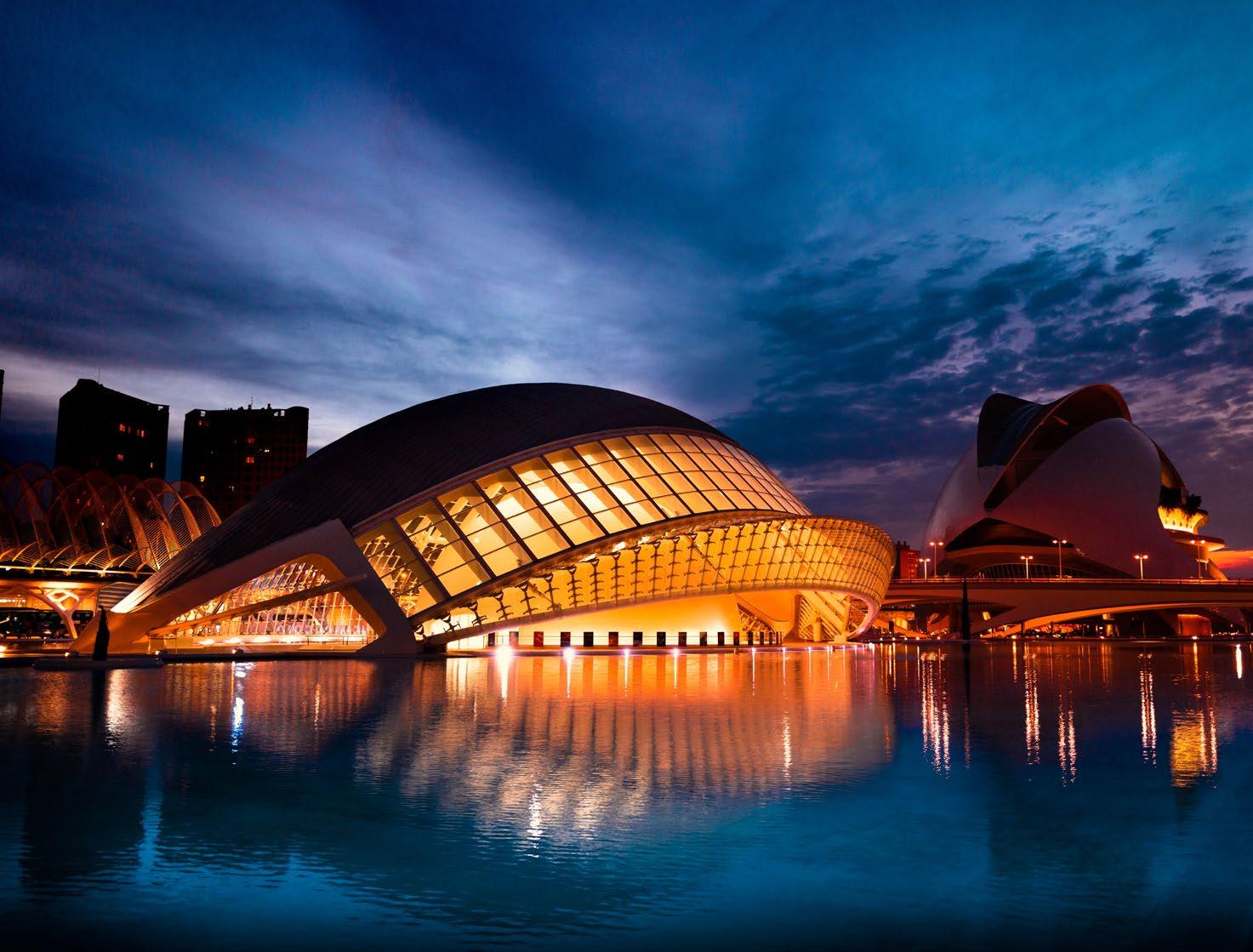

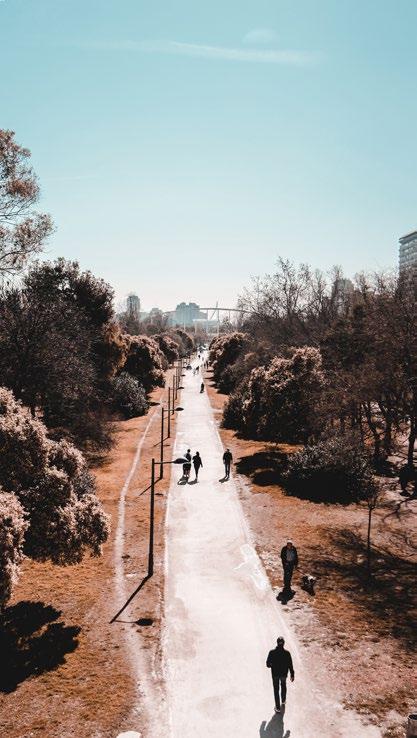
Every autumn, we leave the hustle and bustle of Shoreditch to enjoy a long-weekend of food, drinks and sunshine in Europe. This year, our destination of choice was Valencia – Spain’s third largest city.
Valencia is a vibrant city with a beautiful Medieval city centre, and impressive Modernist architecture designed by world-renowned Architect, Santiago Calatrava.
The city boasts a riverbed park, a beach, great sports facilities, shopping centres, and safe bike lanes – all under endless blue skies. This makes Valencia a must-visit place for anyone in need of downtime, regardless if it is nature or retail therapy that you're looking for.
We recommend that you stay in the Old Town, as it is where the majority of shops, bars and restaurants are. The Old Town is home to the Central Market of Valencia, and just a short-walk away from hip and trendy Ruzafa – Valencia’s hipster district.
However, nothing sums up Valencia like its riverbed park, the Turia Gardens.
After a season of unusually heavy rains in 1957, the Turia overflowed – an epic disaster that called for an epic response. The solution was diverting the river and replacing it with what is
now Spain’s largest and most popular urban park. The Turia Gardens welcomes over 7 million visitors a year, and most locals say they cross a part of it at some point in the day, something they think has a tremendously positive impact in their quality of life. A stroll through the park shows Valencia is a city to enjoy being active outdoors, so make sure to rent a bicycle and explore it.
You can cycle across the park towards the beach, and pass the fascinating City of Arts and Sciences on the way. Arriving there, head to the Marina Beach Club to finish the day with amazing drinks, food, and atmosphere. We recommend trying the Paella – after all, this is the birthplace of the traditional Spanish dish.
Find out more on our blog: missouri-creative.com/blog/





















































































